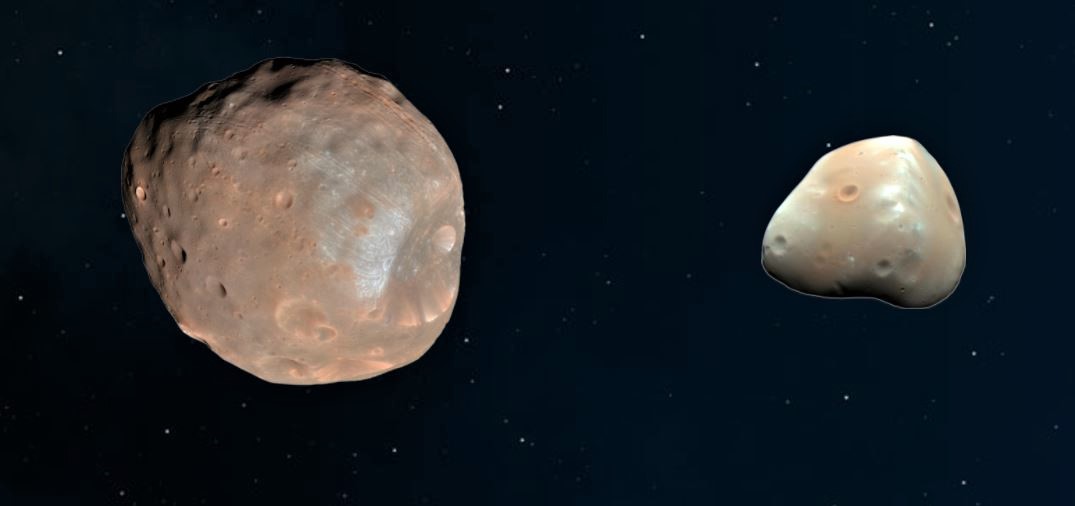
Grove Koger
For a time, I considered naming my blog Worlds Enough, since my interests extend quite a bit beyond our earthly domain. But I stuck with World Enough for simplicity’s sake. However, that’s no reason not to look outward from time to time. Consider, for instance, the moons of Mars, which you see above in an image from NASA.
We know those tiny satellites today as Phobos and Deimos, names that mean, respectively, fear and panic. The names are appropriate, as the two were the sons of Ares, the Greek god of war, or (as the Romans knew him) Mars.

The two satellites were discovered within a few days of each other by American astronomer Asaph Hall (seen above) in August 1877. However, their discovery was, in a sense, anticipated a century and a half earlier by Jonathan Swift, who referred to two Martian moons in his satirical 1726 novel Gulliver’s Travels. A quarter of a century later, Voltaire, who presumably had read a translation of Swift’s novel, mentioned two Martian moons in his satirical 1752 novella Le Micromégas.
A logical mathematical explanation for these anticipations has been advanced. According to this line of reasoning, Venus has no moon, earth has one, and Jupiter was known (in the eighteenth century) to have four. Therefore, Mars ought to have … two. Of course Mercury, which was known to the ancient Greeks, has no moons either. Oh well.
Closer to our own day, radical cosmologist Immanuel Velikovsky argued that the two Martian moons were familiar to the ancients because Mars swept by the earth in a near miss several thousand years ago. “When Mars was very close to the earth,” he wrote in Worlds in Collision (1950), the two moons were perfectly visible. “They rushed in front of and around Mars; in the disturbances that took place, they probably snatched some of Mars’ atmosphere, dispersed it was, and appeared with gleaming manes.” Besides being radical, Velikovsky’s theories regarding the modern configuration of the solar system were wildly wrongheaded, which doesn’t mean that they weren’t a lot of fun. For my take on him and the controversy he created, see my post for June 10, 2018.

A few decades before the appearance of Velikovsky’s work, however, budding American writer Edgar Rice Burroughs had taken up the subject, in a sense, in a science fiction adventure novel published as a serial under the title Under the Moons of Mars in All-Story Magazine. I find that title wonderfully evocative, but the novel is known today, a little more prosaically, as A Princess of Mars. But that’s a story for another day.
□□□
If you’d like to subscribe to World Enough, enter your email address below:
And if you’ve enjoyed today’s post, please share!
